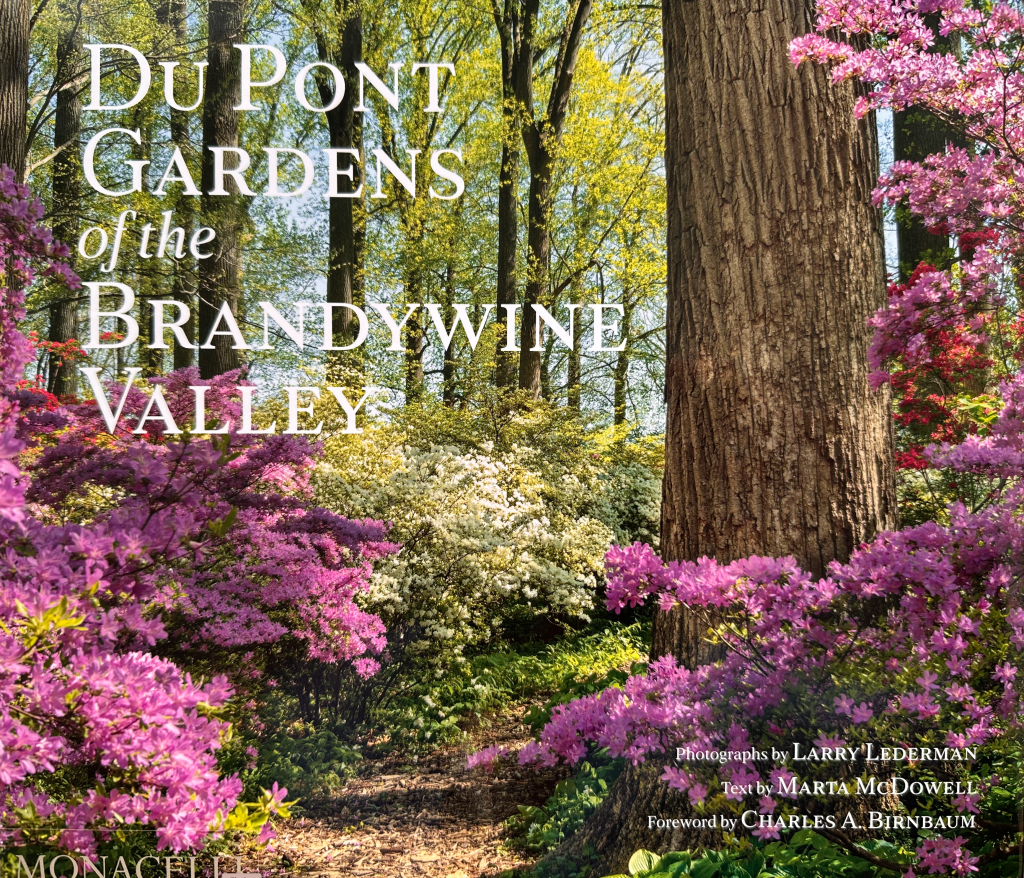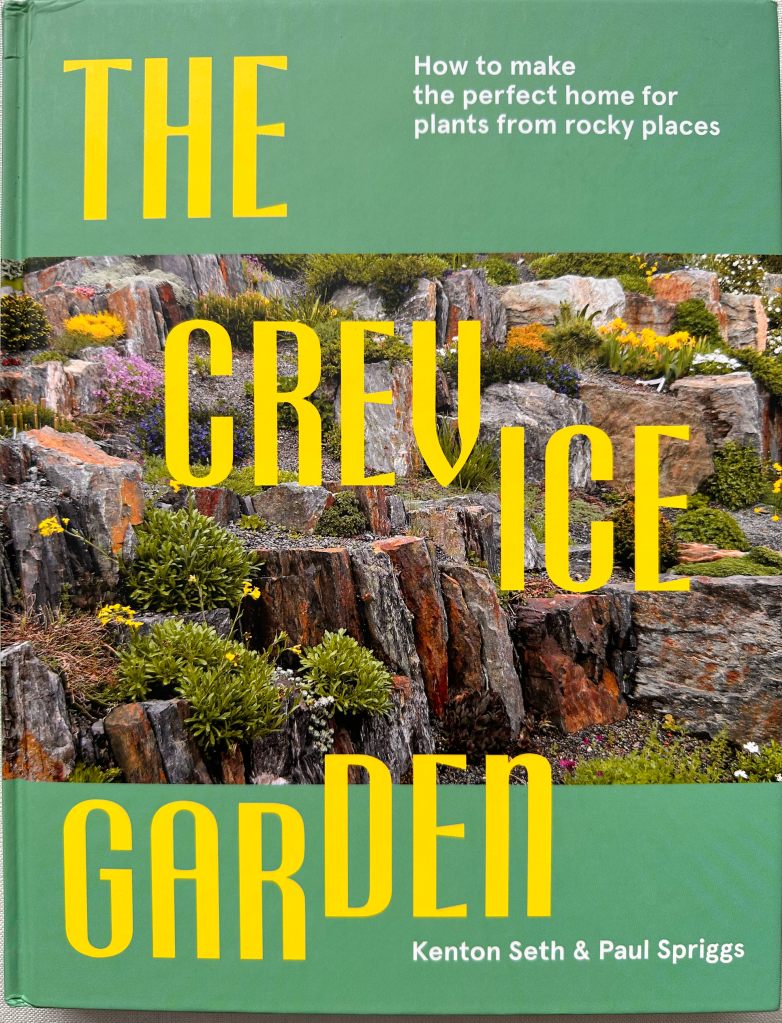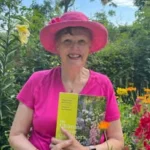Some books that I recommend for winter reading

Another year has passed, and many books have been read here at Northview. Despite my family members occasionally muttering, ‘do you think that you have enough gardening books now?’, I continue to buy, collect (some might say hoard), and read gardening books. I find that I always learn something, appreciate a known garden more, or find a garden to add to my travel list. What I get out of a book might not be earth shattering but it is still important to me as I spend time pondering this gardening obsession.
The biggest problem when recommending books is that there are so many that I would love to talk about. I have chosen five (technically six- as there are two by the same author) to share with you this year. They are listed in alphabetical order.
So, sit down with your favorite beverage. Put up your ‘Do not disturb’ sign and get reading!
DuPont Gardens of the Brandywine Valley, Photographs by Larry Lederman, Text by Marta McDowell, Monacelli Press, 2023.

This book is about gardens in my area of the world. The Brandywine Valley here in south-east Pennsylvania is a garden hot spot. Visitors and locals flock to the gardens in this area to see the magnificent plants and garden designs that are rooted in the past but are right up to date.
If you are planning a visit here, you will love this book to inform you where to go and what to see. If you can’t get here, it is a great armchair travel book. Illustrated throughout by lush, seasonal photos by Larry Lederman it is an excellent coffee table book. Paired with history, description and explanation by the excellent garden historian, Marta McDowell you get the necessary background that makes the book both beautiful and useful. By the end, you are awed by the lasting gardening legacy of the DuPont family. Their contributions have turned this area into a must visit garden capital. That is your invitation. You will not be disappointed.
The Crevice Garden, Kenton Seth & Paul Spriggs, Filbert Press, 2022

The second book is completely different. This is a “how-to” and “why” book. For years I have been fascinated by rock gardening and this one is a niche within rock gardens (get it? That was a pun). This book explains what a crevice garden is, ‘a style of rock gardening that employs the crevices between rocks to mimic that many difficult-to-grow plants need.’ The reason that there is a whole book about this area of gardening may boggle some people’s minds. I, however, find it fun and fascinating.
If this excites you, you must get this book. It has examples, information about how to construct a crevice garden and much more. You will get photos, diagrams, ways to calculate the amount of material needed, additional resources, and inspiration. It is thorough and comprehensive.
I realized while reading that I had been using some of these techniques without having a name for it. The best example that I ever saw was at the Denver Botanic Garden where they made a domed, elongated structure that was full of crevices. I saw it when it was new. I now know that I need to go see it again.
The Writer’s Garden, Jackie Bennett, Photos by Richard Hanson, Frances Lincoln, first published 2014 – this edition 2023

Not all gardeners are writers and not all writers are gardeners – an obvious statement but one that makes this book especially interesting. It has made wonder whether they were gardeners first or writers first. The author suggests in her subtitle that the gardens inspired the authors – I like it.
These writers who memorialize their thoughts and hopes into prose are a subset of gardeners. This makes for a random-ish sample of what gardening in each era entails. Since I am a gardener and a writer, this book particularly fascinates me. There are writers whom I know and others who are new to me. There are favorites like Beatrix Potter, whose house and garden in the Lake District I visited many years ago and other like Frances Hodgson Burnett at Great Maytham Hall, where I would like to go.
The choice of writers ranges from Rudyard Kipling to Leo Tolstoy, Ernest Hemingway, Agatha Christie, and Louisa May Alcott. The photos are fabulous and transport you to the gardens. There is one quote at the top of the page and then other references to their writings throughout the description. I would have liked to have seen additional gardening quotes but that is a minor detail.
Wild, The Naturalistic Garden, Noel Kingsbury, photos by Claire Takacs

If you are thinking of making all or part of your garden into a wild garden, the final selections would be good reads. This book, Wild, is a travelogue of naturalistic gardens that are inspirational and aspirational. Most are situated in England, USA, and Europe, with others in New Zealand, Australia, and Japan. They range from the well-documented, High Line in New York, to lesser known – at least to me – gardens that of course I would now like to visit.
Interspersed between the gardens are six general essays about this naturalistic style. I find that the text is too compressed for easy reading in these blocks, and the faux-typewriter style text for the captions is unnecessarily difficult to read. There is a small but sensible overview of popular garden plants that are used in naturalistic gardening. It is a magnificently produced book with plenty of information for an aspiring wild gardener. There will be a lot more written about wild gardening in the next few years – as this movement really takes hold of the popular imagination.
Wildscape, Nancy Lawson, Princeton Architectural Press, 2023 and The Humane Gardener, Nancy Lawson, 2017

Well researched, full of facts, with a few photos, this book is the opposite of a coffee table book. However, if you are looking for inspirational writing about a wildlife-centered garden approach check out these two books by Nancy Lawson. I will concentrate in this review on her second book, Wildscape, because I was lucky enough to hear her speak recently and talk to her afterwards. Her approach in this book is one that is near and dear to my heart – enjoy your garden with all of your senses and embrace the whole range of animals and plants that you find.
Nancy uses real examples to talk through the complexity of nature. She highlights actions that we take in our gardens and some of the unexpected consequences. I found it an altogether fascinating read. My take-home message is that there is so much for us to learn about our own back yards, we don’t even need to leave home, but maybe some of the other books will egg you on to do some garden traveling.
That is all for 2023 – Wishing you all a happy holiday season and talk to you in 2024. Bye for now. Jenny Rose Carey




Leave a Reply